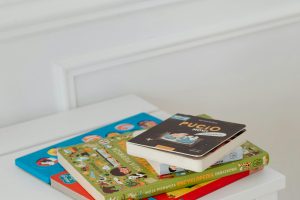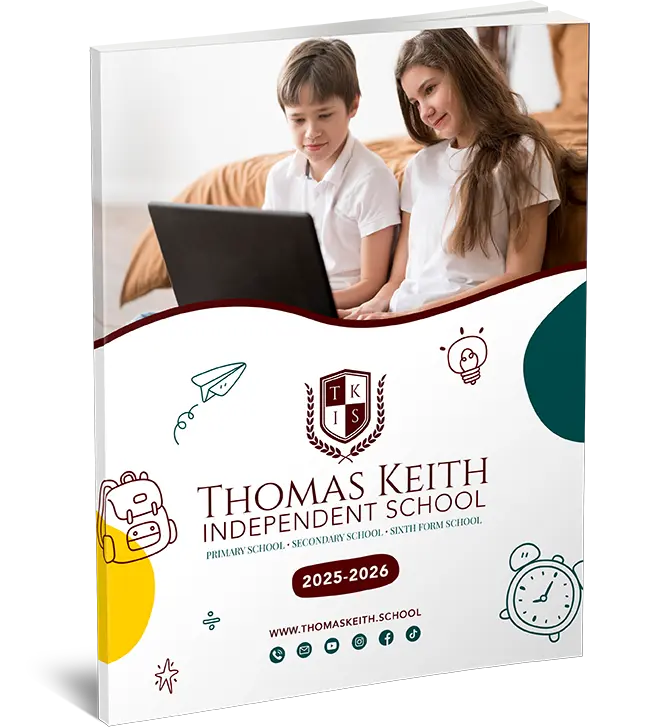
Year 1 Reading Objectives
Helping To Meet The Year 1 Reading Objectives
Learning to read and write, particularly in the early years, is the first step in a child’s educational journey. The first year is crucial for developing good reading skills in children between the ages of five and six. In addition to developing reading skills, achieving Year 1 reading objectives and targets includes promoting a lifetime love of reading. To support this stage, parents and teachers can use focused, well-organised tactics that are adapted to the child’s needs and developmental stage.
The reading goals and objectives for Year 1 will be thoroughly covered in this guide, along with real-world examples and insights into how independent schools like Thomas Keith Online Independent School achieved these objectives. We can assist children in developing into skilled, enthusiastic readers by comprehending the value of reading in Year 1 and the greatest ways to encourage it.
What Are the Reading Goals for Year One?
Children are required to acquire certain abilities and competencies throughout their first year of primary school, which are referred to as year one reading objectives. These goals are intended to be attainable and quantifiable, guaranteeing that the children grow from fundamental literacy skills to more complex comprehension and critical thinking abilities. Reading goals for the first grade are usually in line with national literacy standards, which makes them a crucial benchmark for educators and parents alike.
Essential Reading Goals for Year 1:
Phonemic Awareness: The ability to identify and comprehend the sounds thatmakeupp words. Acquiring knowledge of the correspondences between letters and sounds is known as phonics. Reading fluently means doing so quickly, accurately, and expressively. Vocabulary Development: Increasing one’s knowledge and comprehension of words. Recalling and responding to questions regarding the text is a sign of reading comprehension. These goals centre on establishing a strong foundation in reading, which is essential for further study of other disciplines. Good teaching methods, such as guided reading, reading aloud, and phonics training, can assist the children in achieving these goals in a fun and organised way.
Understanding Reading Goals for Year 1
Year 1 reading targets are quantifiable benchmarks that teachers use to gauge a student’s advancement toward the reading goals. Teachers and parents can track and assist the child’s progress in real-time because these goals are frequently broken down by term or semester.
Examples of Reading Goals for Year One
Term 1: Read simple one-syllable words and determine how to pronounce and recognise basic phonemes.
Term 2: Start reading sentences with simple words and learn the fundamentals of punctuation.
Term 3: Convey understanding by reading brief paragraphs with ease and responding to questions about brief, well-known materials.
By decomposing these goals, children can reach smaller benchmarks that progressively improve their reading abilities. In Term 2, for example, a Year 1 aim might introduce short stories with predictable patterns, while in Term 1, the focus might be on identifying high-frequency terms.
![]()
Realistic Methods for Reaching Year 1 Reading Goals and Targets
A strategy that incorporates efficient instruction, individualised support, and regular practice is needed to meet the reading goals and targets for Year 1.
1. Making use of phonics-based education
A fundamental aspect of Year 1 reading instruction is phonics, which teaches letter sounds and how they combine to produce words. It helps children decode new words, which enhances phonemic awareness and promotes fluency.
Example Strategy: Learning becomes interesting and memorable when phonics games and flashcards are used to practice word blending and letter pattern recognition, such as “sh,” “ch,” or “th.”
2. Promoting Long-Term Reading to Improve Fluency
Children learn to read texts more properly and quickly when they read them often. Children’s fluency and comprehension are improved by repetition, which helps them get to know words and their definitions.
Example Strategy: Schedule daily time for the children to reread their favourite tales or easy texts, emphasising reading expression and speed.
3. Expanding Knowledge Through Contextual Education
In Year 1, increasing vocabulary is a major goal. In addition to learning individual words, children need to comprehend words in context to develop their comprehension abilities.
Example Strategy: Using real-world examples or incorporating new terms into stories are two ways that parents and teachers can promote contextual learning. Children are assisted in connecting language to their experiences when, for example, seasonal words are introduced with seasonal activities.
4. Improving Comprehension Skills Through Techniques for Asking Questions
Comprehension is important because it gauges how well the children comprehend the material they read. Before, during, and after reading, asking questions can improve understanding.
Example Strategy: What do you think will happen next? What caused the character to feel depressed? Help foster critical thinking in the children.
A Reading Support Case Study of Thomas Keith Online Independent School
For Year 1 reading goals and objectives, Thomas Keith Online Independent School provides a distinctive viewpoint. Utilising technology and small class sizes, this online independent school provides focused reading teaching.
Learning Plans That Are Tailored: Every student is given a reading plan that corresponds with their Year 1 reading goals and present strengths. Students are guaranteed to advance at their own pace by the school through the establishment of individualised goals.
Interactive Reading Sessions: Using digital resources, the school starts interactive reading sessions. One way to accomplish Year 1 reading objectives is for students to play an online matching game that emphasises letter-sound correlations, such as during a phonics session.
To monitor progress toward Year 1 reading goals, Thomas Keith Online Independent School regularly administers reading examinations and provides feedback. Teachers help make sure that every child stays on course by giving parents and pupils feedback.

Parents’ Contribution to Year 1 Reading Goals and Targets
When it comes to helping Year 1 students with their reading outside of the classroom, parents are invaluable. Easy at-home activities can help the children reach their reading goals and reinforce what they learn in school.
Suggestions for Parents:
Every day, read aloud to the children to help them develop their vocabulary, understanding, and fluency. Parents may keep the children interested by selecting a variety of picture books and beginning chapter novels.
Encourage youngsters to reflect on the story by posing open-ended questions during reading time. This aids in the development of analytical and cognitive abilities.
A child’s reading development can be greatly impacted by establishing a daily reading habit. Making time each day for 15 to 20 minutes promotes steady improvement.
Honour Accomplishments: Giving youngsters credit for minor successes, like reading a page smoothly or learning a new word, increases their self-esteem and motivation.
Having Trouble Reaching the Reading Goals and Targets for Year One
Notwithstanding their best efforts, some of the children could have trouble meeting the reading goals for Year 1. Learning disabilities, language problems, or restricted access to reading materials are only a few of the causes of these difficulties.
Learning Challenges: Disabilities like dyslexia might cause some children to have trouble understanding or using phonemic awareness. Customised assistance, such as extra phonics training or specialised reading programmes, may be helpful.
Language Barriers: Children learning English as a second language may need more practice pronouncing words correctly and expanding their vocabulary.
Limited Resource Access: Children may lag if they don’t have access to books or educational materials. Whether given through online resources or libraries, reading materials can have a big impact.
![]()
Final Thoughts
A child’s reading foundation must be built and the groundwork for future academic achievement must be laid by meeting Year 1 reading objectives and targets. Children can successfully meet their reading milestones with a combination of structured instruction, strong parental involvement, and assistance from teachers. Thomas Keith Online Independent School is one example of how technology and individualised attention may help, demonstrating that every child can become a proficient reader with the correct instruction.
FAQs
1. What reading goals are there for Year 1?
The precise abilities that children should acquire in year one reading include phonemic awareness, phonics understanding, fluency, vocabulary, and comprehension.
2. Why are reading goals for Year 1 important?
These goals offer quantifiable benchmarks that guarantee the children. Reading proficiency increases steadily over the year.
3. How might first-graders be encouraged to read at home?
Parents can help their first-graders read by reading aloud to them every day, posing questions, establishing a reading schedule, and acknowledging their accomplishments.
4. What part does phonics play in the reading goals for Year 1?
First-year students need to learn phonics because it helps them read and pronounce new words by helping them comprehend the correspondence between letters and sounds.
5. What obstacles might children have to overcome to reach the reading goals for Year 1?
Personalised support can help children overcome obstacles including restricted access to reading resources, language limitations, or learning issues.
To assist every child in accomplishing Year 1 reading objectives and targets and lay a solid foundation for success and learning throughout their lives, educators and parents can collaborate by adopting these insights and techniques.






